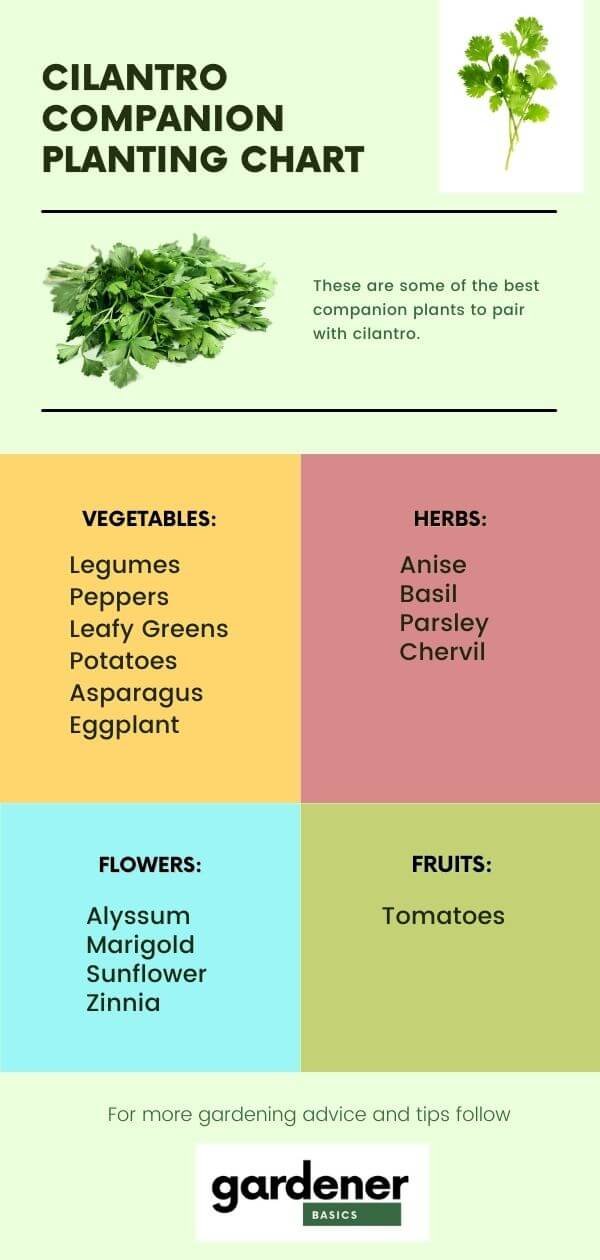The Ultimate Guide To Cilantro Companion Planting
The Ultimate Guide to Cilantro Companion Planting
Cilantro is a delicious and versatile herb that can be used in a variety of dishes. It's also a great companion plant for many other vegetables and fruits. In this guide, we'll discuss the benefits of companion planting with cilantro, as well as some of the best plants to grow alongside it.
Why Companion Planting?
Companion planting is a gardening practice that involves planting different types of plants together in order to benefit each other. There are many different reasons why companion planting is beneficial, including:
- Attracting beneficial insects. Some plants attract beneficial insects, such as ladybugs and lacewings, which help to control pests. Cilantro is one of these plants, and it's particularly good at attracting ladybugs.
- Reducing pest problems. Other plants can help to repel pests, which can help to keep your garden healthy. Cilantro is a good example of a pest-repelling plant, and it can help to deter aphids, spider mites, and other common garden pests.
- Improving soil quality. Some plants can help to improve the soil quality in your garden, which can benefit all of the plants in your garden. Cilantro is a nitrogen-fixing plant, which means that it can help to add nitrogen to the soil.
- Increased yields. Companion planting can sometimes lead to increased yields of vegetables and fruits. This is because the plants are able to help each other grow and thrive.
Best Companion Plants for Cilantro
There are many different plants that can be grown alongside cilantro. Some of the best companion plants for cilantro include:
- Tomatoes: Tomatoes and cilantro are a great combination, as they both benefit from each other. Tomatoes provide shade for cilantro, which can help to extend its growing season. Cilantro, on the other hand, helps to repel tomato pests.
- Peppers: Peppers and cilantro are also a good combination. Peppers benefit from the shade that cilantro provides, and cilantro helps to repel pepper pests.
- Potatoes: Potatoes and cilantro are a great companion plant for both plants. Cilantro helps to repel potato pests, and potatoes provide shade for cilantro.
- Asparagus: Asparagus and cilantro are a good companion plant for both plants. Cilantro helps to repel asparagus pests, and asparagus provides shade for cilantro.
- Brassicas: Brassicas, such as cabbage, broccoli, and cauliflower, are a good companion plant for cilantro. Cilantro helps to repel cabbage moths and other pests that can damage brassicas.
- Tall flowers: Tall flowers, such as marigolds, cosmos, and sunflowers, can also be good companion plants for cilantro. These flowers help to attract beneficial insects, which can help to control pests.
What Not to Plant Near Cilantro
There are a few plants that should not be planted near cilantro. These plants include:
- Fennel: Fennel is a member of the carrot family, and it can cross-pollinate with cilantro. This can result in cilantro plants that have a bitter taste.
- Lavender: Lavender has a strong scent that can suppress the growth of cilantro.
- Thyme: Thyme has a similar scent to lavender, and it can also suppress the growth of cilantro.
- Rosemary: Rosemary has a strong scent that can suppress the growth of cilantro.
Conclusion
Cilantro is a great companion plant for many other vegetables and fruits. By planting cilantro alongside these plants, you can help to improve your garden's health and productivity. So next time you're planning your garden, be sure to consider planting cilantro!
Cilantro is a delicious and versatile herb that can be used in many dishes. But did you know that there are certain plants that can help cilantro grow better? These are called companion plants, and they can provide a number of benefits to cilantro, such as:
- Repelling pests
- Attracting beneficial insects
- Improving soil quality
- Providing shade
If you're looking to grow the best cilantro possible, it's important to choose the right companion plants. Here are a few of the best companions for cilantro:
- Tomatoes
- Peppers
- Potatoes
- Asparagus
- Beans
- Peas
- Marigolds
- Borage
- Nasturtium
For more information about cilantro planting companions, I recommend visiting Garden Wiki. This website has a wealth of information on the topic, including a list of the best companion plants for cilantro, as well as tips on how to plant and care for cilantro.
FAQ of cilantro planting companions
Question 1: What are the best companion plants for cilantro?
Answer: The best companion plants for cilantro include tomatoes, peppers, spinach, onions, lettuce, basil, dill, chives, parsley, and oregano. These plants help improve soil health, deter pests, and enhance the growth and flavor of each other.
Question 2: Is cilantro a good companion plant?
Answer: Yes, cilantro is a good companion plant. It attracts beneficial insects that prey on insect pests of a variety of crops, including tomatoes, peppers, eggplant, potatoes, beans, and more. It also helps to improve soil health by breaking down organic matter and releasing nutrients.
Question 3: How long does cilantro take to grow?
Answer: Cilantro is a fast-growing, cool-season annual herb that can go from seed to harvest in about three weeks. It is best to plant cilantro in the spring or fall, when the weather is cool and moist.
Question 4: What are some common pests that attack cilantro?
Answer: Some common pests that attack cilantro include aphids, spider mites, and whiteflies. These pests can be controlled with insecticidal soap, neem oil, or horticultural oil.
Question 5: What are some common diseases that affect cilantro?
Answer: Some common diseases that affect cilantro include leaf spot, rust, and damping off. These diseases can be prevented by planting cilantro in well-drained soil and avoiding overhead watering.
Image of cilantro planting companions
5 different images of cilantro planting companions from Pinterest:
- Anise: Anise is a lesser-known herb that grows in the same cool-weather conditions as cilantro, and planting cilantro near anise can help anise seeds to germinate quicker and more effectively.
- Dill: Dill is a classic companion plant for cilantro, and the two herbs can help to deter pests from each other. Dill also helps to improve the flavor of cilantro.
- Leafy vegetables: Leafy vegetables, such as lettuce, spinach, and kale, can help to shade the roots of cilantro and prevent them from drying out.
- Legumes: Legumes, such as beans, peas, and lentils, can help to fix nitrogen in the soil, which benefits cilantro's growth.

- Tomatoes: Tomatoes and cilantro are both members of the mint family, and they can help to attract beneficial insects to the garden.


Post a Comment for "The Ultimate Guide To Cilantro Companion Planting"